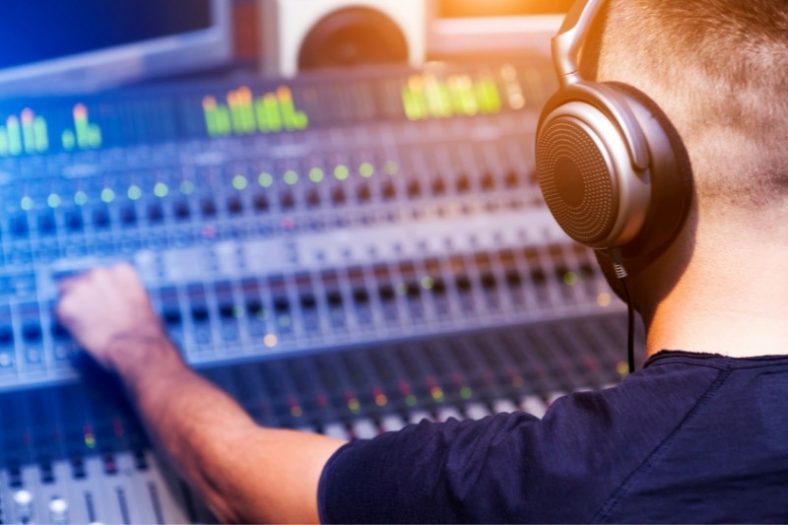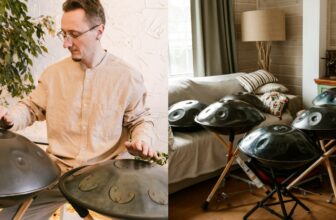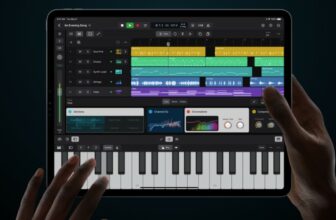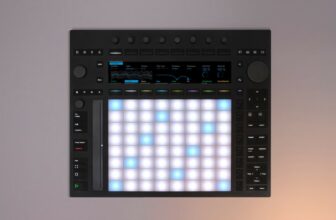The Fletcher Munson Curve (What You Need to Know When Mixing)

In 1933, the American physicists Harvey Fletcher and Wilden Munson conducted an experimental study on perceived loudness to determine the least amount of energy needed to conduct a phone call.
Their goal was to make phone calls cheaper by limiting their frequency range to the bare minimum.
The experiment was a success, but not only for phone companies. Fletcher and Munson came up with an equal-loudness contour reference known as the Fletcher Munson Curve, which is still used today in science and music production.
The Fletcher Munson Curve is one of the most enlightening, influential, and helpful tools for measuring perceived loudness. But how does it work, and why is it so important for mixing and mastering engineers?
Contents
What is the Fletcher Munson Curve?
The Fletcher Munson Curve is a graph exploring the relationship between the measured sound pressure level (also known as amplitude) and the perceived loudness of sound over the frequency spectrum.
Human beings don’t hear all sounds equally: our ears are excellent at picking up certain frequencies while ignoring others. The Fletcher Munson Curve is a visual representation of the number of dB needed for humans to convincingly perceive each particular frequency of the spectrum. It’s like a map to the way our ears react to sound loudness according to its frequency.
The Fletcher Munson Curve was the result of an experimental process in which subjects listened to individual frequencies at a similar amplitude and were asked to rate their loudness.
What Fletcher and Munson concluded still amazes music producers today: our ears are frequency-biased, and sound needs to be adapted to the way our ears work to be more equally perceived.
How the Fletcher Munson Curve Affects Your Mixes
The Fletcher Munson Curve is an experiment on the science of perceived sound, and that’s why it’s so important for mixing and mastering engineers. Audio professionals have access to plenty of tools that can be used for accurately measuring sound properties (such as amplitude). But without considering the way our ears work, these tools are virtually useless.
The main goal of mixing and mastering is to come up with an audio file that can be comfortably perceived by all of its listeners. You want it to have enough bass, but not too much. You want it to be crisp and clear, but you don’t want it to be painful to listen to. And you want it to be loud, but without damaging the frequency balance of the whole mix.
Whatever your goal is as an audio professional, one thing’s for sure: you’re working on a sound that will ultimately be perceived by a set of human ears.
The Fletcher Munson Curve per se doesn’t affect your mixes: in fact, it can be a big help! But what the Fletcher Munson Curve tells us about human-perceived loudness is something that you, as an audio professional, simply cannot ignore.
How our Ears Perceive Sound (According to the Fletcher Munson Curve)
We’ve established that understanding perceived loudness is essential for mixing and mastering audio, but how can the Fletcher Munson Curve help us to create better mixes?
Let’s start by taking a look at the graph, represented by a simple XYZ axis. In the X line, you can see the frequency of sound, going from 20HZ to 20kHZ. In the Y line, you can see the sound pressure level (or amplitude), measured in dB. And in the Z line, you can see the number of dB needed for a certain frequency to be perceived by the human ear.
Now that we know how to read an equal-loudness contour graph, let’s explore some things the Fletcher Munson Curve has taught us about how humans perceive sound:
We don’t hear all frequencies equally
While our ears are “programmed” to pick up certain frequencies with a high level of response, they tend to ignore others. Extremely low and extremely high frequencies are particularly elusive. Unless they’re very loud (in dB), we will not be able to hear them.
We have a threshold of audibility
Represented by the lowest line in the Y-axis of the Fletcher Munson Curve, the threshold of audibility determines how loud (in dB) a given frequency needs to be for our ears to perceive it. According to the graph, for instance, low frequencies at 40HZ need to have an amplitude of at least 50dB to be picked up by the human ear.
We’re highly responsive to speech
Remember that the original goal of the Fletcher Munson Curve was to determine what’s the best set of frequencies to save money on phone calls?
Well, they concluded that the human ear is extremely receptive to speech (especially consonants) and is “programmed” to perceive sounds between 1kHZ and 5kHZ with a very high level of detail. This was in effect the frequency range used by phone companies for years – that’s why phone calls sound the way they do!
We hear frequencies more equally at a very high amplitude
To be more exact, at 90dB. In the Fletcher Munson Curve, 90dB is the amplitude sweet spot at which different frequencies in the spectrum are more equally perceived. This may help to explain why songs sound fuller and better in a venue than when you’re listening to them at home.
What Frequency are Human Ears Most Sensitive To?
According to the Fletcher Munson Curve, the frequency we are most sensitive to is the 3.5kHZ frequency.
The human ear is extremely sensitive to speech, which means we don’t need much amplitude to detect sounds in the 1kHZ to 5kHZ area of the frequency spectrum.
Why? Because 3.5kHZ is the actual frequency of our ear canal! This means that, if our ears could be played like a wind instrument, 3.5kHZ would be the fundamental frequency they would produce. This may help to explain why songs with electric guitar sound automatically louder to most listeners, or why snare drums are so easily detectable in a song.
Best Volume to Mix Music According to the Fletcher Munson Curve?
Some experts recommend the range of 75 to 85dB, but there’s no definitive answer to the question.
Fundamentally, it’s important to analyze the potential traps in perceived loudness that come from mixing both at a very low volume and a very high volume.
If we work at a very low volume, we will probably miss out on some low-frequency action and add too much gain to bass and kick-drum instruments. If we work at a very high volume, we will perceive sound loudness in a more balanced way and neglect the listening experience of the people who don’t have access to high-quality speakers and headphones.
The safest option is to analyze your mixes and masters at different volumes and tweak sounds according to the perceived loudness of frequencies registered not only by the Fletcher Munson Curve but also by your trained ear.
Summary
If the science of sound is mathematical, the science of perceived loudness is physiological. For better or worse, our ears don’t perceive all sounds in the same way. Taking in the lessons of the Fletcher Munson Curve, audio professionals must consider the volatility of the human ear before making any mixing and mastering decision.
Our own ears are an excellent metric for perceived loudness, but it’s always helpful to rely on an equal-loudness contour graph such as Fletcher Munson’s.





